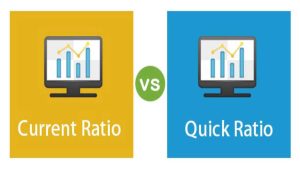In this post, we will learn about the Advantages and Disadvantages of Quick Ratio.
Here is a short story that covers what a Quick ratio is.
The quick ratio is used to test business liquidity and capacity to cover its short-term obligations. This ratio is an improved variant of the current ratio that attempts to overcome the current ratio’s weaknesses. The Quick ratio is often referred to as the Acid Test Ratio.
Must Read – How to calculate the Quick ratio or Acid-Test ratio?
Advantages of Quick Ratio

- The quick ratio excludes inventory in its formula, which is not necessarily assumed liquid, providing a more accurate view of the business’s liquidity status.
- Because inventory is omitted from current assets, bank overdrafts and cash credit are omitted from current liabilities because they are mostly covered by inventory, allowing the calculation more relevant in determining the business’s liquidity situation.
- Stock valuation could be difficult, and it will not necessarily be at marketable value. As a result, the quick ratio is not hindered because inventory valuation is unnecessary.
- Inventory can also be very seasonal and varies in volume over the course of a year. If taken into account, it has the potential to flatten or pump up the liquidity state. The quick ratio eliminates this issue by excluding inventory from the equation.
- In a diminishing market, which typically has a high volume of inventory, this ratio would provide the business with more stable repayment capacity than the present ratio, that requires inventory.
- If the current ratio is being used, a business’s short financial stability can be overestimated owing to its huge inventory base. This condition can be addressed while using the acid test ratio, that limits businesses from obtaining new loans, the financing of which could be more difficult than stated by the existing ratio.
Best Accounting Service Providers in India
Disadvantages of Quick Ratio
- Using this ratio itself will not be adequate to evaluate the business’s liquidity status. Reliable research can necessitate a comparison with rivals and industry standards.
- This ratio excludes inventory from the formuls, which could be unsuitable for companies where stock could be accurately priced at a marketable price. It must be used instead of omitting when calculating the business’s liquidity status.
- This ratio might not have been a good metric for all business models for demonstrating short-term solvency since businesses with relatively high inventory such as supermarkets, may remove inventory to arrive at a liquidity situation that is not fundamentally right.
- The quick ratio disregards the degree and duration of cash flows, which will be a significant determinant of the business’s capacity to cover obligations as they become due.
- The ratio assumes that accounts receivable are liquid and readily convertible to currency, however this is not the truth.




